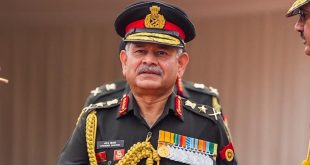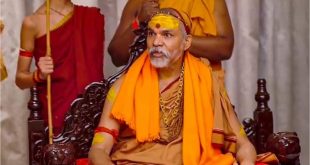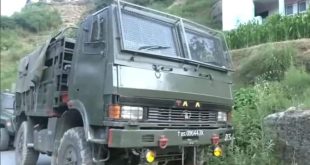
The Manipur Police have formally lodged an FIR against the Assam Rifles, alleging that personnel from the latter blocked Manipur’s own vehicles and obstructed their efforts to conduct “search operations in an arms act case in pursuit of Kuki militants.”
The news sent shockwaves, given the state’s prolonged spell of violence spanning over three months. Right from the outset, clashes have marred the landscape, not merely between two ethnic factions, but also between diverse security units that ideally should have united to quell the unrest.
Curiously, for Manipur’s denizens, the news failed to elicit surprise or astonishment. Instead, it seemed a logical culmination of the deeply entrenched resentment and anger directed towards the Assam Rifles.
This incident also underscores the profound impact of identity politics.
Meiteis’ Deep-Seated Grudge Against Assam Rifles
The Assam Rifles holds the distinction of being India’s oldest paramilitary force and the foremost counter-insurgency unit in the Northeast region.
Its initial moniker, bestowed by the British in 1935, was the Cachar Levy. Since then, the force has undergone a series of name changes: the Assam Frontier Police (1883), the Assam Military Police (1891), and Eastern Bengal and Assam Military Police (1913), before ultimately assuming the name Assam Rifles in 1917.
This very force laid claim to Kangla Fort in Imphal, the capital of Manipur.
In 1892, British forces descended upon Manipur, overpowering the state’s own troops. The Union Jack was unfurled within Kangla’s walls on April 27th of that year. This date remains etched as a somber memory for the Meitei community, known as the Dark Day.
Kangla stands as a pivotal historical and spiritual site embodying Meitei culture and civilization. Within the fort’s precincts lay around 360 sacred sites. Notably, before the Uttra, in the ancestral coronation hall, stood two imposing Kanglā Shās constructed from bricks, crafted by Chinese prisoners taken captive during wartime. This mythical creature combines features of a lion and a dragon.
Following the British departure from Manipur, the land housing Kangla Fort fell under the purview of the Defense Ministry of the Dominion of India. The Garhwal Rifles took over from the British troops after India gained independence, succeeded later by the 4th Assam Rifles.
Since then, the Assam Rifles have maintained a presence within Kangla. Covering roughly 236.84 acres, the entire fort area is directly overseen by the Defense Ministry of India, represented in the field by the Assam Rifles, a central paramilitary force.
Allegations of Human Rights Abuses by Assam Rifles
Meiteis have been resolutely demanding the evacuation of Assam Rifles from the fort premises, yet their appeals have fallen on deaf ears. Moreover, the force has faced allegations of human rights violations, including instances of murder and rape, as voiced by human rights activists.
These purported violations have occurred with a sense of impunity, attributed to the force’s operations during Manipur’s classification as “disturbed” under the Armed Forces (Special Powers) Act of 1958. Judicial avenues failed to provide relief to the victims, leaving alleged crimes unpunished.
The friction between civil administration and Assam Rifles is documented by both human rights activists and the Government. In one instance, during Operation Bluebird, a counter-insurgency endeavor, the Assam Rifles barred the Superintendent of Police and Deputy Commissioner from accessing their designated jurisdiction.
The situation grew dire enough for then Congress Chief Minister, Rishang Keising, to address a memorandum to the Union Home Minister in September 1987. In it, he lamented the Assam Rifles’ establishment of a parallel administration within the region, which led to the wrongful confinement, humiliation, and obstruction of official duties for the Deputy Commissioner and Superintendent of Police by security personnel.
Numerous writ petitions were filed in high courts and the Supreme Court, challenging the AFSPA. Central to these challenges was the contention that the Assam Rifles, under the Act, had effectively assumed control over civil administration, thereby imposing a de facto state of martial law, a violation of constitutional principles.
Regrettably, in 1997, the Supreme Court upheld the Act’s validity.
In November 2000, the Assam Rifles were responsible for the deaths of 10 civilians in Malom Makha Leikai, near Imphal airport. Among the victims were a 62-year-old woman and an 18-year-old, who had previously received a national bravery award.
This incident spurred Irom Sharmila to embark on a fast in protest, which she ended only in 2016, as a demand for the repeal of AFSPA.
Subsequently, in 2004, a woman was abducted, subjected to rape, torture, and ultimately murder by the Assam Rifles. This grievous act ignited public outrage, particularly among Meitei women.
In response, a group of 12 Meira Paibis positioned themselves before Kangla Fort, the Assam Rifles’ headquarters, shedding their clothing as they vociferated their identity as the deceased woman’s mothers. Their chant echoed the sentiment that they’d rather face rape and death than bow to oppression.
In the aftermath of this powerful protest, the Assam Rifles eventually relinquished control over Kangla Fort, though the struggle to repeal AFSPA endured.
Focus on Land and Resources, Not Insurgents and Refugees
Nonetheless, a comprehensive examination of the Assam Rifles’ operations is warranted, given its central role in counter-insurgency across the Northeast and safeguarding the Indo-Myanmar border.
Unique in its structure, the Assam Rifles operates under dual control. While the Ministry of Home Affairs governs its administrative matters, its operational command lies with the Indian Army, overseen by the Ministry of Defence.
This force is instrumental in repelling refugees streaming into Manipur from neighboring Myanmar. Categorizing all refugees as “illegal migrants,” as proclaimed by the Home Ministry, a term that the Meiteis are adopting to describe the Kuki-Mizo-Zo people.
Extremist factions among the Meiteis, such as Arambai Tenggol and Meitei Leepun, have sounded a war cry, accusing Manipur of being besieged by Burmese forces. Even Meitei intellectuals have drawn parallels to the seven-year devastation during Burma’s historical invasion of Manipur.
According to these extremists, the Kukis embody the Burmese invaders, serving as facilitators of the incursion. Consequently, when Assam Rifles intervenes to protect Kukis from attacks, Meiteis contextualize the current violence as an insurgency using historical references.
Evident is the fact that Manipur’s unrest ultimately revolves around land and natural resources, overshadowing concerns of insurgents or refugees.
For Manipur’s police and the Meitei populace, this struggle symbolizes a battle to safeguard their identity, unity, and Manipur’s integrity. The Kukis strive for an autonomous administration, while the Nagas and Mizos harbor aspirations for their respective homelands.
In the end, who will emerge triumphant from this cycle of violence?
Ultimately, the Kukis, Nagas, and Meiteis are poised to bear collective losses.
Indian security forces find themselves entangled in a treacherous web of identity politics, rendering them unable to fulfill their sworn duty of protecting India’s unity and integrity.
 Suspense Crime Sach Ka Dam
Suspense Crime Sach Ka Dam


